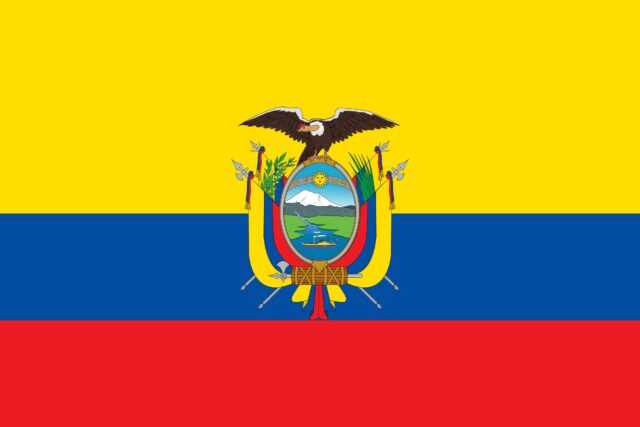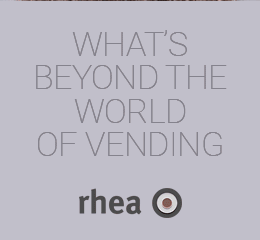GEISLINGEN/STEIGE, Germany – Columbia, Brazil or Nicaragua – there are many South American countries which people associate with premium coffee. Ecuador, however, which lies in the north-west of the South American continent, is not usually one of them. The arabica and robusta varieties from this small Andean state may not enjoy the same excellent reputation as comparable coffee beans from the neighbouring country of Columbia, nor can Ecuador hold its own against Brazil when it comes to production capacity.
But nevertheless, there are still treasures to be discovered in Ecuador’s coffee-growing areas: the distinctive, intensive sweetness and fruity aromas of coffee from Ecuador make it an interesting alternative to the other coffee-growing regions.
And the Republic of Ecuador, situated between the Pacific Ocean and the Amazon Basin, does not deserve the attention of coffee-lovers simply because it is a coffee-producing country: although instant coffees dominate the Ecuadorian coffee culture to this day, various preparation methods, both traditional and modern, guarantee a wide selection of coffee specialities throughout the country, so that locals and tourists alike are sure to find something to their taste.
WMF Professional Coffee Machines supports this diversity with state-of-the-art machines sold via its local partner Equindeca.
A chequered history
The history of coffee-growing in Ecuador began in the mid-19th century. The country declared its independence from the Spanish crown in 1821, and not long afterwards, from the 1860s onwards, Coffea plants became an increasingly popular sight in agricultural areas.
The first coffee was exported to Europe in 1905, and at the latest in the 1920s, when a large proportion of the cacao plants in Ecuador succumbed to an aggressive disease, coffee became the dominant agricultural product.(1)
It continued to play a key role in the economy of the South American country for many decades, but, beginning in the 1980s, underwent a dramatic change.
Falling prices for green coffee on the world markets made the crop unprofitable for many Ecuadorian coffee-farmers, and more and more land remained uncultivated, a trend which continued in the 1990s and the early years of the new millennium – between the years 1997 and 2002 alone, production dropped by more than 25,000 kilograms.(2)
Difficult conditions for coffee farmers
It also has to be said that the National Coffee Council COFENAC (Consejo Cafetalero Nacional) has contributed significantly to the decline of the coffee industry in Ecuador. A government organisation whose members include the country’s minister for agriculture and various representatives of the coffee industry, it was founded with the declared aim of making Ecuadorian coffee more competitive(3) – but never really made good on its promise.
It is particularly noticeable that many decisions of the COFENAC seem to focus on the interests of the producers of instant coffee. Instead of strengthening the position of local producers, for example, it approved the import of cheap Vietnamese coffee.(4)
The introduction of the US dollar as the official currency also had a considerable influence on coffee-growing in Ecuador. Although the currency reform in the year 2000 stabilised the ailing economy, it also created a high income level compared to that in other Latin American countries.
For traders and coffee roasters, this in turn meant relatively high costs which were rarely justified by a correspondingly high quality of coffee.(5)
Robusta for the industry, arabica for the connoisseurs
These special circumstances, in combination with an unusual import law, led to a further deterioration in the situation for the Ecuadorian coffee farmers. Under the so-called “Regimen 21,“ companies can import certain raw materials tax-free for direct further processing.
The beneficiaries of this special regulation are almost exclusively producers of instant coffee, as it allows them to import cheap coffee beans from Brazil, Vietnam etc., process them and then sell their products on both the national and international markets.
This instant coffee, labelled “Ecuadorian,” is enormously popular, especially in Germany and Russia,(6) though the Ecuadorians themselves are also very fond of this convenience product: if you order a coffee in Quito, Guayaquil or Santo Domingo, you often get a cup of hot water or milk, into which you then stir the desired quantity of granulated coffee.(7)
This strong focus on instant coffee contributes to a further special feature of coffee cultivation in Ecuador: as one of only a handful of countries, Ecuador produces both robusta and arabica coffees.
Robusta thrives in the lower-lying regions of Guaya, Manabí and Pichincha and is predominantly used for instant coffee. Arabica varieties such as Typica, Bourbon or Catuai, on the other hand, dominate in the mountainous province of Loja. Held in high regard by coffee-lovers all over the world, they have a slight acidity and a pleasing sweetness.(8)
New approaches with a focus on quality
Despite the steady decline in coffee production in the past years and the in many respects unfavourable situation for Ecuador’s remaining coffee farmers, there are grounds for optimism. In recent years, this northern Andean country has seen remarkable changes, both with regard to cultivation and the coffee culture in general.
The drivers of this change are a generation of young coffee enthusiasts who would like to generate a new enthusiasm for high-quality speciality coffees and their preparation. The conditions for cultivation are almost perfect: volcanic soils rich in nutrients, temperatures between 20 and 30 degrees Celsius all year round, average precipitation of 1,600 millimetres per square metre in the rainy season and optimum altitudes.
In order to exploit these conditions as well as possible, more and more coffee farmers are relying on modern cultivation methods and investing in the corresponding technology, supported by various private and government organisations. This approach allows them to produce even more exotic Arabica varieties such as Geisha or SL-28 in premium quality.(9)
This newly discovered quality-awareness found its expression in the prestigious “Cup of Excellence“ award, which was presented in Ecuador for the first time in the year 2021. With a rating of 90.39 points, a coffee of the variety “Typica Mejorado“ from the Loja region demonstrated impressively just how good Ecuadorian coffee can be.
The winners of the second and third places also came from this province, which lies in the south, on the border with Peru.(10)
Between instant coffee and “Third Wave“ cafés
It is hardly surprising, then, that international coffee experts have long established speciality coffees from Ecuador as an exciting alternative to beans from other famous growing areas.
This can be attributed to the distinctive “Ecuadorian” taste profile, which is characterised by a unique sweetness with fruit-preserve notes which is rounded off by a delicate acidity reminiscent of stone fruits like peaches, apricots or plums.(11) In the country of origin, too, more and more people are discovering a preference for the excellent coffees of their home country.
Though soluble instant coffee granules remain popular, they are facing increasing competition from coffee specialities in the European and US style. There are more and more trendy coffee shops and “Third Wave“ cafés – at least in large towns – and are popular with young Ecuadorians and tourists alike. From cappuccino with perfect milk foam to cold brew, there is a coffee creation for every taste between Quito and Cuenca.(12)
However, visitors from other countries should definitely also try one of the coffees prepared in the traditional way. In small restaurants and bars as well as outside the major cities, even today, guests are often served a “Café Pasado“.
This is not a classic filter coffee, as the literal translation of the name might suggest. The ground coffee powder is packed in a fine-mesh fabric sachet and lowered into hot water like a tea bag. A more traditional variant of instant coffee is the “Esencia de Café“. This thick, jet black coffee essence is usually placed on the table in small bottles and can be stirred into milk or water as desired.(13)
WMF in Ecuador
It goes without saying that wherever coffee quality is important, machine technology from Geislingen an der Steige is never far away.
For over six years now, WMF Professional Coffee Machines has been present on the Ecuadorian market, where its local trade and service partner Equindeca offers customers the high-quality automatic coffee machines “Made in Germany,” which are used in a wide variety of locations, from international hotels who want to serve coffee in premium quality in their restaurants to local premium coffee shops or one of the country’s largest ice cream parlour chains.
Equindeca supplies caterers and restaurant proprietors with the perfect machine from the WMF portfolio for their specific requirements and concept, whereby the powerful WMF 5000 S and its successor model, the WMF 5000 S+, are particularly popular. Equindeca has sales representatives and service technicians throughout the country and currently operates three stores – in Guayaquil, Quito and in Cuenca, where the company is based – in which the machines are presented.
In this way, innovative technology and coffee expertise from WMF Professional Coffee Machines also contribute to the further development of the coffee culture in Ecuador.
Footnotes
1 Kaffeezentrale, Ecuador.
2 Equal Exchange, History of Coffee in Ecuador.
3 Agroscopio.com, COFENAC.
4 Equal Exchange, History of Coffee in Ecuador
5 Perfect Daily Grind, Why does Ecuador import so much coffee?
6 Perfect Daily Grind, Why does Ecuador import so much coffee?
7 Not your average American, Drinking Coffee in Ecuador.
8 Fresh Farmer, What do we know about Ecuador and its coffee culture?
9 Perfect Daily Grind, 5 Reasons Why Specialty Coffee is Taking Off in Ecuador.
10 Global Coffee Report, First Ecuador Cup of Excellence reveals Loja has promising coffee region.
11 Perfect Daily Grind, Origin Spotlight: Exploring Ecuador’s Specialty Coffee.
12 Perfect Daily Grind, 5 Reasons Why Specialty Coffee is Taking Off in Ecuador
13 Not your average American, Drinking Coffee in Ecuador
About WMF
WMF, which is short for Württembergische Metallwarenfabrik, is a leading premium supplier of household products, professional coffee machines and hotel equipment. WMF stands for innovation based on tradition and convinces with development and design “Made in Germany“.
Under the brand names WMF, Silit and Kaiser, the company offers products for preparation, cooking, food, beverages and baking for home use, while business customers, in particular from the restaurant and hotel industry, can choose from product lines for the preparation of coffee, the perfectly laid table and buffet under the brand names WMF, Schaerer, Curtis and Hepp.
WMF products are available in more than 120 countries, and the company has over 6000 employees.
In Germany, Austria and Switzerland, but also in the rest of Europe and worldwide, for example in China, WMF operates a total of around 350 own stores. The company was founded in Geislingen an der Steige in 1853 and became part of the French SEK Group at the end of 2016.


















